Reading René Herse: the Bikes, the Builder, the Riders
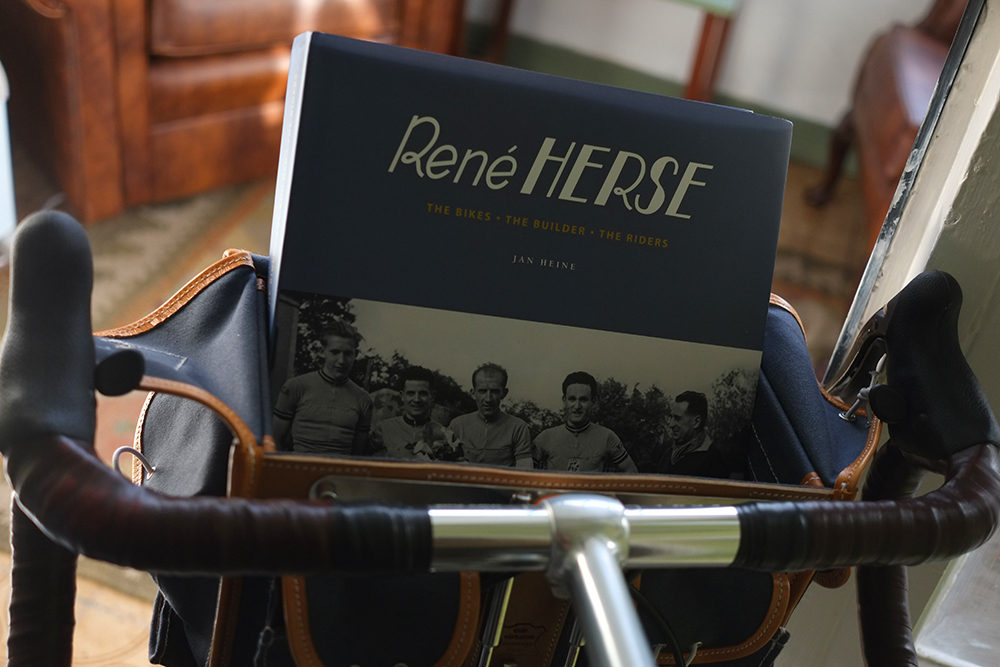
It is oversized. It is heavy. And it is strikingly beautiful. Which perhaps explains my initial impression that René Herse: the Bikes, the Builder, the Riders was a lavish coffee table book. Inside this exuberant tome, I expected to find an extensive collection of historical photographs, tied together with snippets of text in a tasteful, neutral font - just enough to provide a bit of background. But the old adage of not judging a book by its cover (or size, or heft?) holds true here, and then some. Jan Heine's labour-intensive creation is, so to speak, above category. In part meticulous scholarly research, in part engaging historical narrative, and in part analysis of a cross-section of the bicycle industry, this book could stand on its own without a single illustration - let alone the 450 it actually contains.
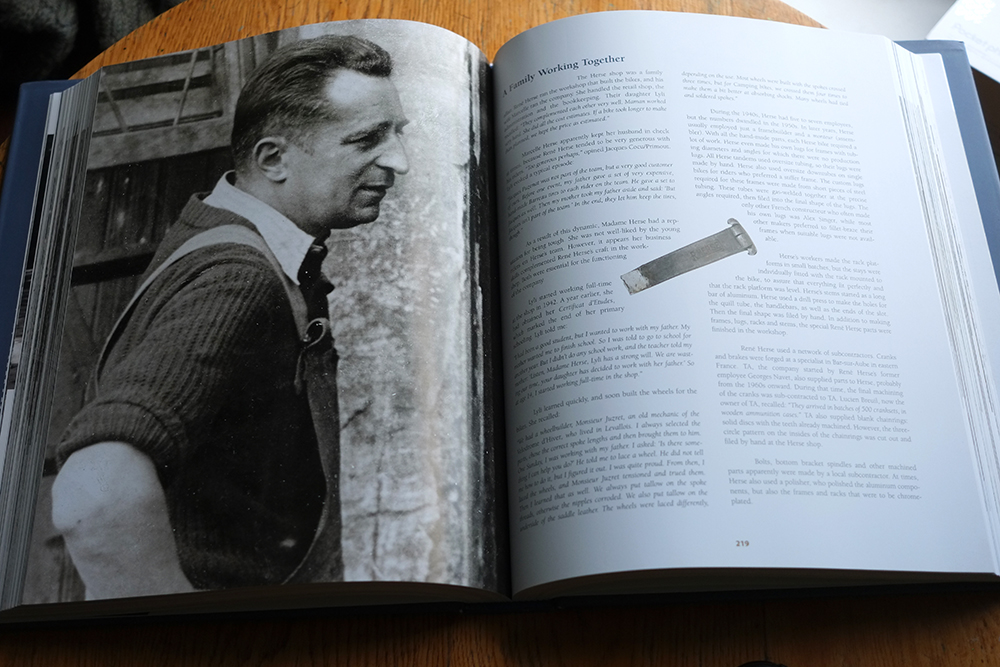
The man René Herse was a French master builder of highly coveted (and now highly collectible) bicycles at a time when self-supported cycling thrived in 20th century France. This book documents the story of his work and his brand, in the broader context of two overlapping themes: on the one hand, the constructeur industry at large, and on the other hand, World War II and its aftermath.
In my opinion, Jan Heine’s detailed and well researched description of the French constructeur (custom bicycle) industry through the mid-20th century is perhaps even more interesting and valuable than the focus on Herse per se. It will prove educational to fans of French classic bicycles and to randonneuring enthusiasts alike. And it ought to be required reading for any framebuilder who fancies themselves a modern-day constructeur!
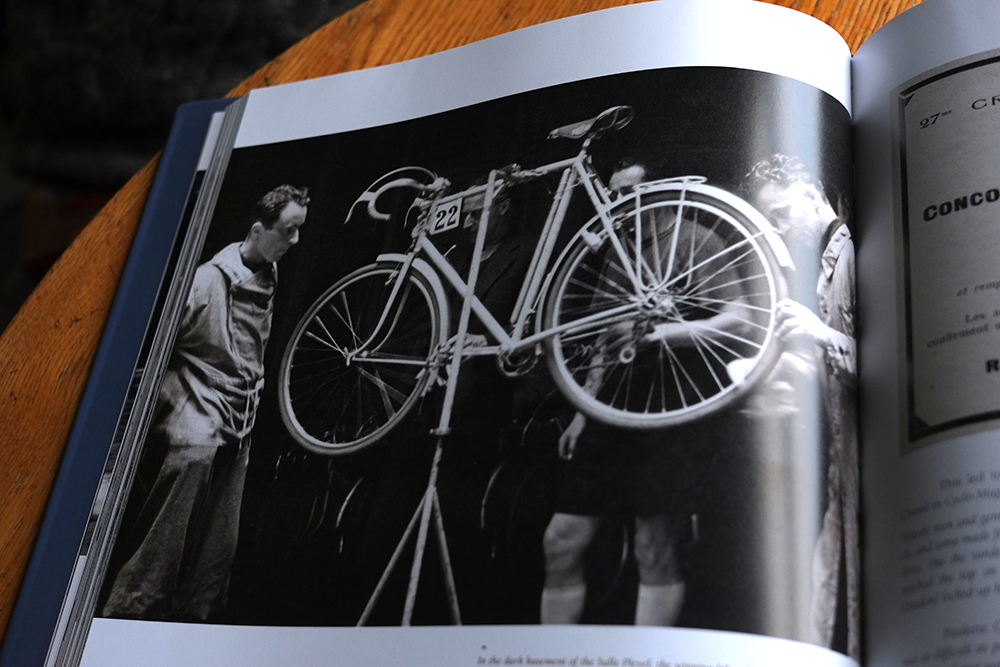
Today traditional randonneuring bicycles tend to be thought of as an antidote of sorts to “modern racing bikes.” Often they are promoted as being for those who appreciate fine craftsmanship and who value comfort over speed. This image, however, contradicts the original intent behind these bicycles’ design. As this book documents through written, spoken and photographic evidence, in their original incarnation randonneuring bicycles were first and foremost performance machines. They were meant to be as lightweight as possible. They were meant to be as fast as possible. They were meant to win self-supported endurance races over mixed terrain and long, arduous hill climb races. Comfort was an important factor, but only insofar as it contributed to speed. Features such as racks, fenders, lighting and fat tires were necessary due to the nature of the events the bikes were designed to take part in, but great care was taken to ensure that these items enhanced rather than hindered performance. Each builder wanted their version of the randonneuring machine to be the lightest and the fastest. It is this, rather than the beauty or the intricacy of the bikes, that commanded customer interest, as well as the high price tags. The randonneuring industry was a racing industry. Make no mistake about it: René Herse and his customers were a bunch of weight weenies and not ashamed to admit it. Even if the riders did wear wooly knee socks and crisply ironed button-downs to the races.
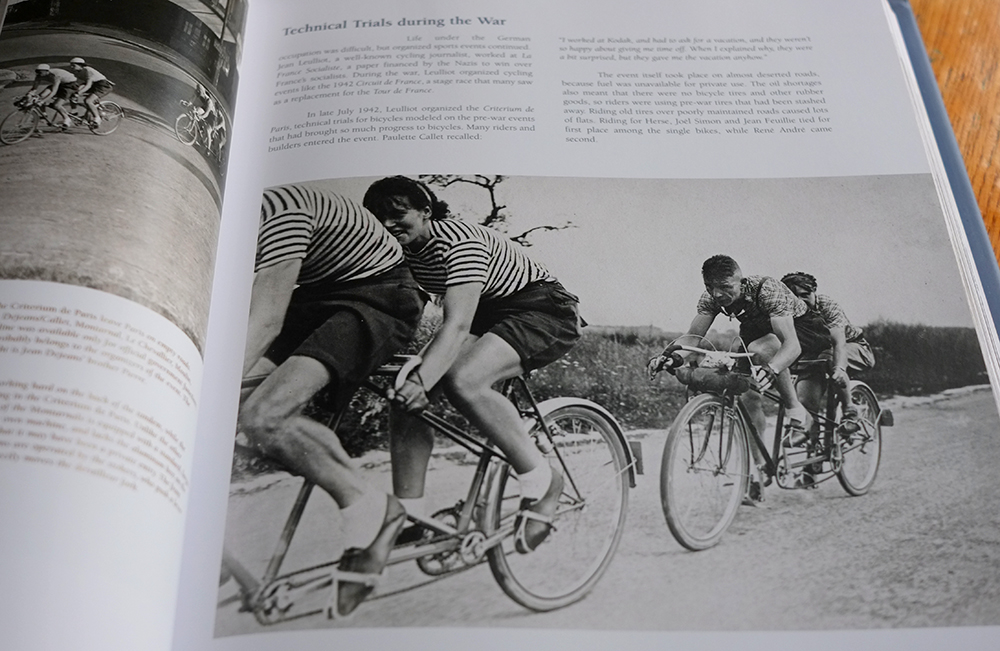
The story of Herse begins in the 1930s and spans through the 1970s. As such, the history of French randonneuring is inevitably intertwined with the history of World War II and its aftermath - in both economic and logistical terms. To discuss this at length would turn this into a very different sort of review than intended, so I will say only that the juxtaposition of the two storylines unsettled me at times. In the chapters spanning the German occupation of France, now and again mention is made of things that simultaneously made me want to and not want to probe deeper into those matters. Suffice to say, randonneuring during this period served an escapist function, which explains why it thrived and advanced throughout the occupation period, despite shortages in materials, travel restrictions and other hardships. In the post-war decade, the economic and political rebuilding of Europe, combined with the high cost of motor vehicles and impracticality of exotic holidays, further increased the appeal of randonneuring - particularly as a pastime for young couples - before its popularity finally waned as cars grew more affordable and seaside holidays more trendy. It is thought-provoking to trace the rise and decline of randonneuring along this historical timeline.
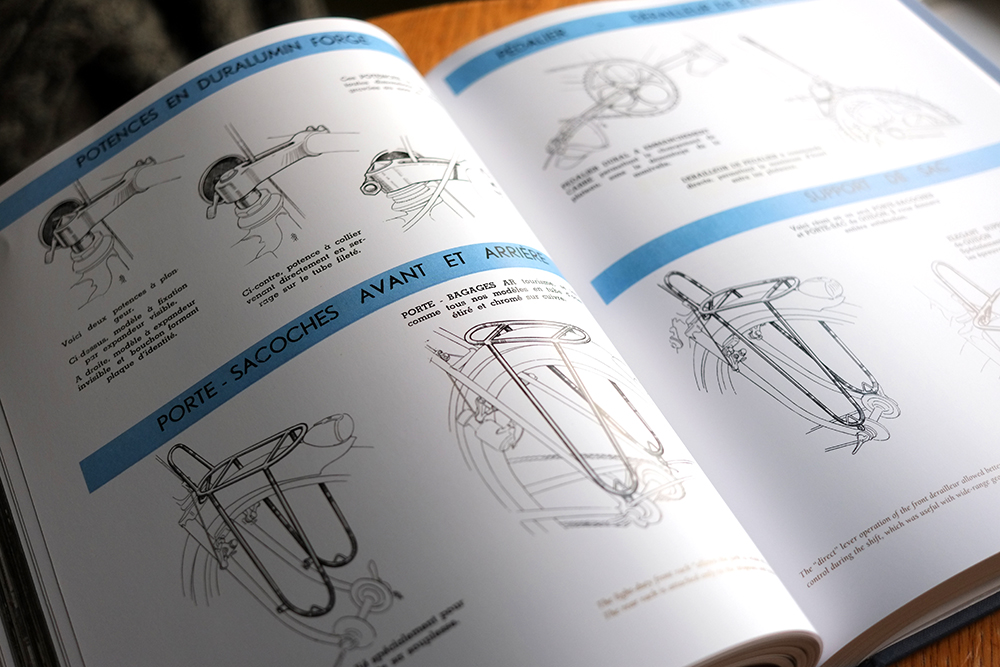
Many other topics are covered in this 423-page tome. For those interested in the history of randonneuring, that aspect of the book - complete with detailed descriptions of routes, maps, and even race reports - will be a real treat. Hill climb races are also covered extensively. There is even mention of early cyclocross. And, of course, the Technical Trials are documented at length. Tandem enthusiasts will find lots to love about this book, as entire chapters and photo spreads are dedicated to this theme - tandem bicycles, famous tandem couples, tandem teams, tandem-specific events. Female cyclists make frequent appearances throughout the text. In particular, the many anecdotes about Lyli Herse (the builder’s daughter and a formidable randonneuse, whom the author interviewed extensively), are charming and informative. And for those interested in build specifications and design elements of the machines themselves, this is covered extensively also, with much attention paid to Herse’s R&D process. To discover what else this book has to offer, you will just have to see for yourself.
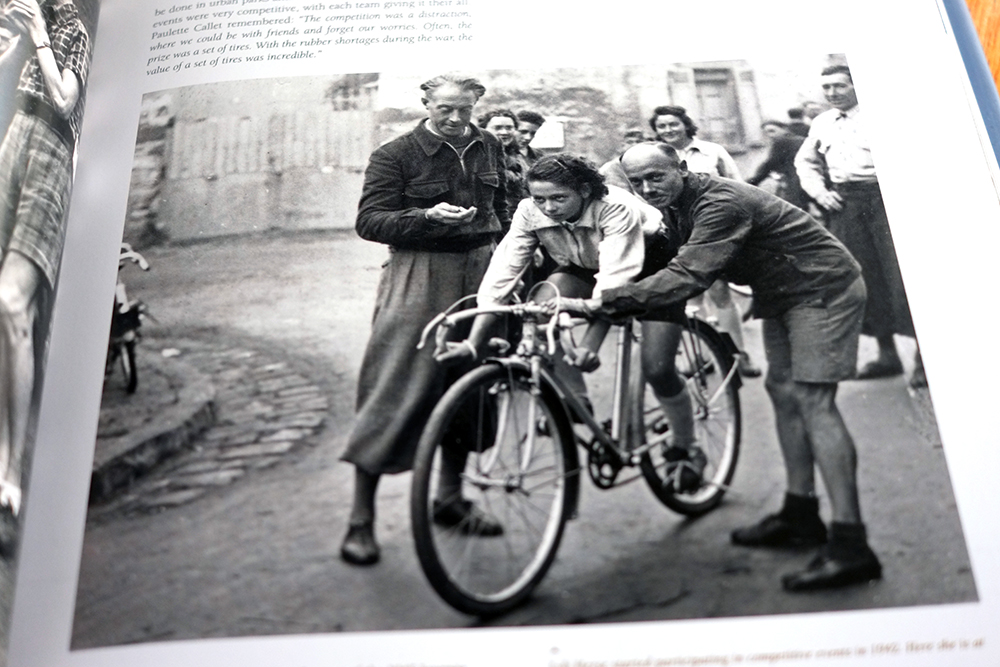
Although normally I am a fast reader, it took me weeks to get through René Herse. Not because it was hard-going (quite the opposite), but because it made me strangely excitable. In the process of reading it, I was given to sudden urges to jump up and pace the room at random. Other sections forced me to pause and mull over the information, even take notes. Far from a dry academic volume, it is a book that is thoroughly alive - bursting with stories, information and ideas.
Nevertheless, if you are not the bookish type be assured that it gives satisfaction also as a picture-book. The photos - as stunning in their variety as they are in their narrative qualities - were obtained in large part from Lyli Herse, and rather unintentionally - as described by the author in a blog post about the process of writing the book:
Among the lawn mower and gardening tools ...we came upon two suitcases. “What is in there?” I asked Lyli. She replied: “I don’t know. Open them!”
The suitcases were full of photos. Not just hundreds, but thousands of photos. Not just snapshots; most were of excellent composition and quality, taken by professional photographers. As I looked through them, the whole history of Cycles René Herse began to unfold in front of my eyes.
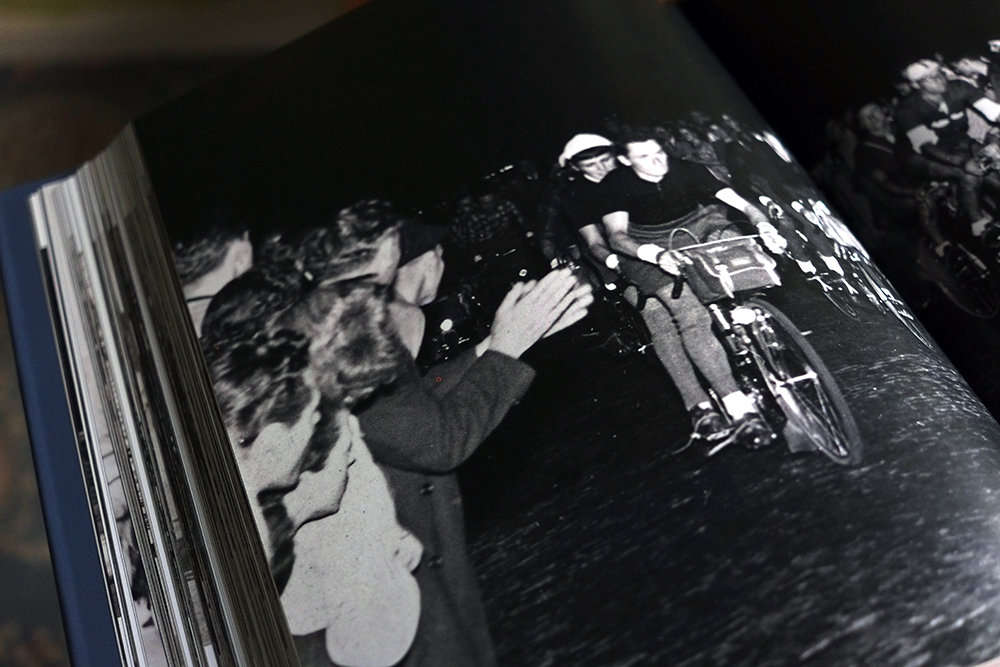 And unfold it did, resulting in a tremendously engaging - and just plain tremendous - work. Since its 2013 publication I have read René Herse cover to cover twice and have lent it to multiple friends ...in the process of which I've come up with a rather serious bit of criticism: The book is so heavy, it requires a custom low-trail bike with a massive front rack to transport it. Coincidence or conspiracy? I will leave it to you to decide.
And unfold it did, resulting in a tremendously engaging - and just plain tremendous - work. Since its 2013 publication I have read René Herse cover to cover twice and have lent it to multiple friends ...in the process of which I've come up with a rather serious bit of criticism: The book is so heavy, it requires a custom low-trail bike with a massive front rack to transport it. Coincidence or conspiracy? I will leave it to you to decide.René Herse: the Bikes, the Builder, the Riders is published by Bicycle Quarterly Press. It is available directly through their website, as well as at select bicycle shops, for a retail price of $86. Also available in French.

Lyli Herse is still with us. Jan had a great post recently on her 87th birthday.
ReplyDeletehttps://janheine.wordpress.com/2015/01/18/reconnecting-old-friends/
Yes, sorry - I did not mean to "kill" Lyli! Realised the mistake right away.
DeleteNice review, i did notice the new book of Jean Heine, but it's still not in my frontbag yet (because of time, not weight ;). The page you show with potences et porte-saccoches is absolutely lovely: who doesnt' feel a bit nostalgic seeing these hight-end components advertising (is it actually?) Heine's work on french bike builder is impressive, in quarterly also, a free-rider-researcher of 1940-60's bike history . The strange thing is that it looks the french old bike nerds seem to ignore his master work (rarely crossed his name on tonton vélo forum), while he translates each of his major book in french...!
ReplyDeleteBy the way, have you ever been to the survivor of the french randonneuring Age d'Or, Alex Singer, in Paris suburbs ?
I think that particular illustration is from a catalog, but there were ads with similar illustrations as well.
DeleteI used to visit Paris fairly regularly for work, but sadly this was either before my interest in bicycles, or shortly after (summer 2010 was the last time) but with no time to spare. Should I have occasion to be there again, I will certainly visit the Alex Singer shop.
Wow. Is that the medium Berthoud?
ReplyDeleteIt's the small. The book is twice as tall as the bag : )
DeleteOff topic, but assuming you are familiar with all the sizes, do you think the largest Berthoud would fit a laptop? Thanks!
DeleteMaybe an 11" if you place it diagonally. Otherwise, nope.
Deletesorry, get confused (with googles & dust seen on heine's blog), René Herse book is not precisely new (2012), Heine did even present it at "la bicyclette" shop in paris, but i still not have it in my front bag yet...
ReplyDeleteThis is what I have said a million times and got shouted down by numerous people over the years, many of whom have given up bikes and wool: it was a race bike.
ReplyDeleteThe modern internet conflict between fast and distance, not to mention transport, was and remains asinine, in my opinion, and lacked/lacks perspective.
It is a great book, beautiful review as well, now I want to have to look at mine (yet again).
ReplyDeleteI hope to obtain my own copy of this book. Looks like a great read...even for us recumbent riders!
ReplyDeleteI've been aware of this book for some time and would dearly love to get my hands on a copy. It's the price that chokes me. :(
ReplyDeleteYes, the price choked me too, Rebecca but I finally bought the book and it is now one of my treasures. Get the book!
DeleteRemember it's oversized! So it's really like you're getting a value meal.
DeleteJan himself has never had a problem with racing. Racing after all was his entry into cycling. As best I can tell, his issue with modern race design is the inattention to practicalities such as integrated fenders and lighting*. I enjoy loaded road touring on a bike with geometry very close to that in the third picture above and that incorporates many other elements right out of the pages of this book. Certainly not something I could say about my nephew's Trek Madone. But then except for maybe a jaunt down Rua 40, I cannot imagine touring on a Long Haul Trucker either. *His thoughts on tire width appear no longer to be at odds with the main stream.
ReplyDeleteDid you purchase this book for $86?
ReplyDeleteI both purchased a copy and received a complimentary review copy (long story), giving one of them away.
DeleteJan Heine at his best.
ReplyDelete+1!
DeleteAwesome book by all accounts. I've been putting off buying it because I know it's just going to make me crazy. It's going to make me want even MORE bikes, make me spend hours making Herse-alike stems and racks for bikes that don't need them and get me working on my time-machine again. This stuff is like frikken Heroin. Plus I might have to break into somebodies house and steal all the copper pipes to pay for it.
ReplyDeleteSpindizzy
If you haven't read the book yet and you get it, you're done for.
DeleteThis book would look lovely next to my copy of "The Golden Age of Handbuilt Bicycles". Just throwing that out there if you're thinking of giving your 2nd copy away. ;)
ReplyDeleteI hope that this is another part of Jan brainwashing all of American cycling to accept a different model of recreational road bike.
ReplyDeleteI'm an industry lifer and consider "doper bikes," as I call contemporary racing bikes, to be sillier and more useless to many of us than race bikes of 20 and more years ago. French constructeur inspired bikes would be a bike that many of us would be happier on than 13 lb. Chinese plastic overpriced POS's if we were able to access them! I have seen Herse bikes over many years having grown up in an area where a surprising number of people rode them. They are, as the saying goes, truly all that.